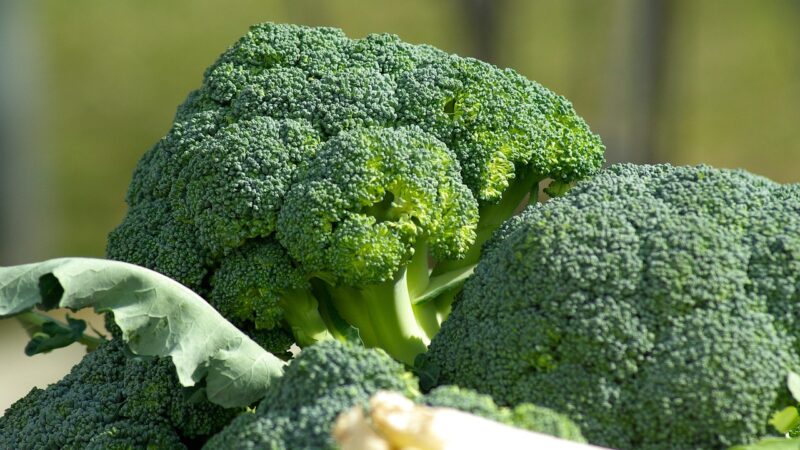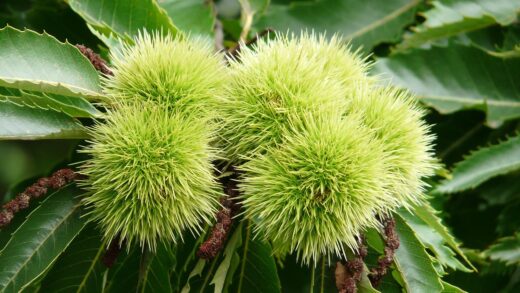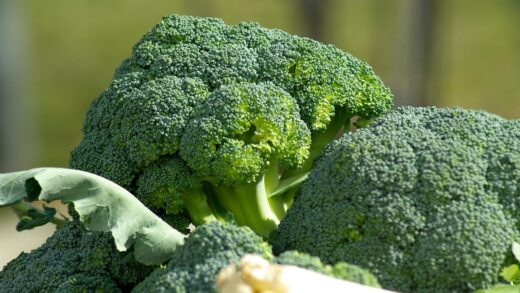The light requirements of broccoli

The provision of adequate sunlight is a non-negotiable prerequisite for growing healthy, productive broccoli. As a photosynthesizing organism, broccoli relies entirely on light energy to convert carbon dioxide and water into the sugars that fuel all of its growth, from its root system to its leaves and, most importantly, to the dense, edible head. The quantity and quality of light a plant receives directly correlate with its vigor, its ability to ward off diseases, and its ultimate yield. Therefore, understanding and meeting broccoli’s specific light requirements is a fundamental aspect of its successful cultivation, influencing everything from site selection to planting density.
Broccoli is classified as a full-sun crop, meaning it performs best when it receives a minimum of six to eight hours of direct, unfiltered sunlight each day. This ample exposure to light is what enables the plant to build a large, robust frame of leaves. These leaves act as the plant’s engine, and a larger engine is capable of producing more energy. This stored energy is then channeled into the formation of a large, tight, and high-quality central head, which is the primary goal for most gardeners. A plant that is starved for light simply will not have the resources to produce a substantial harvest.
The consequences of insufficient light are quickly and clearly visible in a broccoli plant’s growth habit. A plant struggling to find enough sun will become “leggy,” characterized by a long, thin, and weak stem as it stretches in an attempt to reach a better light source. The leaves will often be smaller and a paler shade of green compared to a plant grown in full sun. This etiolated growth results in a structurally weak plant that is more susceptible to damage from wind and rain and is less capable of supporting a heavy head.
While the “more is better” mantra generally applies to sunlight for broccoli, some consideration must be given to the intensity of that light, particularly in very hot climates. In regions where the summer sun is exceptionally intense and is combined with high temperatures, broccoli can become stressed. In these specific situations, providing some light afternoon shade can be beneficial to prevent scalding and reduce heat stress. However, for the vast majority of temperate climates, maximizing direct sun exposure is the key strategy for a successful and bountiful broccoli crop.
Optimal sunlight exposure for head development
The relationship between sunlight exposure and the development of the broccoli head is direct and profound. The process of forming a large, dense head is incredibly energy-intensive for the plant. This energy is generated almost exclusively through photosynthesis, a process that is entirely dependent on light. Therefore, to achieve the best possible head size and quality, the plant must be situated in a location where it can absorb the maximum amount of solar energy throughout the day, which means a site that receives at least six to eight hours of direct sun.
More articles on this topic
During the vegetative growth phase, abundant sunlight allows the plant to develop a large and efficient leaf canopy. Each leaf is a small factory, and a greater number of large, healthy leaves translates into a higher potential for energy production. This initial phase of building a strong leafy frame is crucial because it is this stored energy that will be mobilized later to form the flower head. A plant that has been grown in partial shade will have a smaller frame and simply will not possess the energy reserves required to produce a head of any significant size.
Once the plant transitions to its reproductive phase and begins to form a head, the need for sunlight remains just as critical. The developing head itself can photosynthesize to some degree, but the bulk of the energy continues to come from the surrounding leaves. Consistent, full sun exposure during this period ensures that the head develops steadily and remains compact. Inadequate light during head formation can result in a head that is loose, poorly formed, and may be more prone to opening up and flowering prematurely.
It is also important to consider the orientation and spacing of your broccoli plants to maximize light interception for every plant in the patch. Planting in a location where they will not be overshadowed by taller crops, trees, or structures is essential. Adhering to the recommended spacing guidelines of 18 to 24 inches between plants prevents them from shading each other as they mature. This ensures that even the lower leaves of each plant can receive adequate light, contributing to the overall energy pool and supporting the development of a top-quality harvest.
Consequences of insufficient light
When a broccoli plant is deprived of its required amount of sunlight, it undergoes a series of predictable and detrimental changes that significantly compromise its health and productivity. The most immediate and visible symptom of light deficiency is legginess, or etiolation. The plant’s primary survival instinct is to find light, so it will divert its energy into rapidly elongating its main stem, creating a tall, spindly, and structurally weak plant. This weak stem will have difficulty supporting the weight of the leaves and will be completely incapable of holding up a heavy head, should one even form.
More articles on this topic
Beyond the weak stem, the overall growth of a light-starved broccoli plant will be severely stunted. The leaves will be noticeably smaller, thinner, and often a pale, yellowish-green color, indicating a lower concentration of chlorophyll. Since chlorophyll is the pigment responsible for capturing light energy, this further reduces the plant’s already compromised ability to photosynthesize. This creates a vicious cycle of low energy production leading to poor growth, which in turn further limits the potential for future energy production, resulting in a perpetually weak and underperforming plant.
The most disappointing consequence for the gardener is the impact on the harvest. A broccoli plant grown in insufficient light may fail to produce a head at all. If it does manage to form one, it will be a small, loose, and often bitter-tasting imitation of a proper head. The plant simply does not have the necessary energy reserves to invest in creating a large, dense cluster of flower buds. Instead, it will prioritize its own survival, which may mean forgoing the reproductive effort of head formation altogether.
Furthermore, a plant weakened by a lack of sunlight is far more susceptible to a host of secondary problems. It will be less able to defend itself against pests, as it lacks the energy to produce defensive compounds or repair damaged tissue quickly. It will also be more vulnerable to fungal and bacterial diseases, as its weakened state makes it an easier target for pathogens. In essence, providing inadequate light creates a stressed plant, and a stressed plant is a magnet for nearly every other potential problem in the garden.
Managing light in different seasons
Managing your broccoli crop’s access to sunlight requires slightly different strategies depending on whether you are planting for a spring or a fall harvest. The position and intensity of the sun change with the seasons, and understanding these changes can help you optimize your planting location and timing. For a spring crop, which is planted in late winter or early spring and grows into the progressively longer and stronger days of early summer, the primary goal is simply to provide as much sun as possible.
When planting a spring crop, select the sunniest location available in your garden. This is a time when other trees and shrubs may not have fully leafed out yet, potentially opening up spots that would be shadier later in the year. The increasing day length and rising sun angle work in your favor, providing the growing plants with ample energy. The main challenge for a spring crop is often heat; as summer approaches, intense sun combined with high temperatures can stress the plants and cause them to bolt, so harvesting must be timely.
For a fall crop, the strategy involves accounting for the decreasing day length and the lower angle of the sun in the sky. This crop is typically planted in mid-to-late summer and matures during the cooler, shorter days of autumn. Because the sun is lower in the sky, shadows cast by buildings, trees, and even other garden plants will be longer. It is crucial to choose a site that will still receive at least six hours of direct sun even as the sun’s path shifts southward (in the Northern Hemisphere).
In very hot climates, managing intense summer light for a fall crop’s initial growth phase can be beneficial. Planting in a location that receives full morning sun but gets some light, dappled shade during the hottest part of the afternoon can help young transplants get established without suffering from extreme heat stress. Some gardeners even use temporary shade cloth for the first few weeks after transplanting a fall crop. However, as the season progresses into autumn and the sun’s intensity wanes, this shade is no longer necessary, and full sun exposure becomes the priority to ensure the heads mature properly before the onset of hard freezes.

















